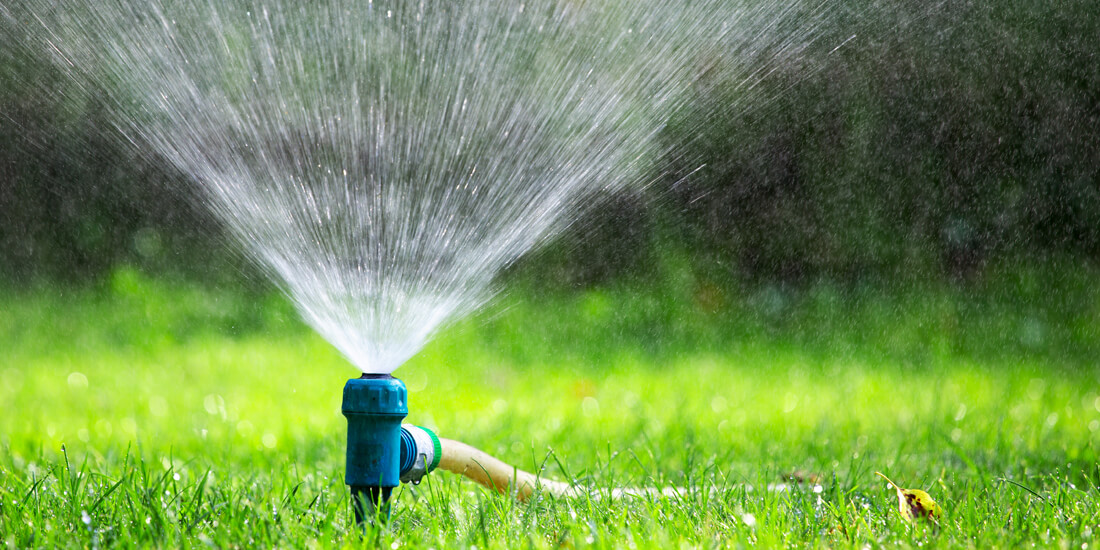Spring Sowing Guide 2024

There’s nothing quite like the smell of freshly cut grass in the air to remind us that summer is on its way and spring is well and truly here! With the weather (hopefully!) hotting up it’s time to turn your attention to getting your lawn on.
Sowing a new lawn / overseeding / repairing patches
Spring is an ideal time to sow grass seed. The weather is mild but warm enough for seed to germinate and there is usually plenty of spring showers. Sowing in spring also means your lawn will be fully established by summer, so you can sit back and relax with a cold one when our UK weather is at its best. As always, make sure to check your local forecast before sowing seed.
Temperatures need to consistently be 8-10 degrees and above (day and night temperatures) for at least two weeks before deciding to sow.
Once the temperatures are ideal for seeding, you may decide to sow a new lawn from scratch if you’ve recently moved into a new house, or you may want to overseed your existing lawn. Sometimes, your lawn may not need to be overseeded, and some patches may just need some repairing. Whatever you need to do to your lawn, we have a guide on each of these;
Other times, there may be something very specific that is wrong with your lawn that may be causing issues. This can be down to clay soils, shaded spots, dog urine burns and perhaps some pests you may have in your lawn. Luckily, we have guides for these too!
- How to get the most out of your clay soils
- Choosing the best seed for a shaded lawn
- How to protect your grass from dog urine
- How to repair dog urine patches
- How to get rid of leatherjackets
- How to repair leatherjacket damage in your lawn
You may not be sure what seed you need, so we’ve created a handy table below. All of our seed mixes can be blended together if more than one fits your needs, and they can all be used to overseed with.
For normal (loam) soils & no shade
For normal (loam) soils & light, dappled shade
For normal (loam) soils & heavy, blocked shade
For clay soils
For sandy soils
Feeding

Feeding your lawn keeps it healthy, and when your grass emerges from winter, it may not be looking its best. Fertiliser contains three different chemicals that do different things for your lawn.
- Nitrogen (N) is responsible for giving the lawn its lush green colour by stimulating leaf growth and helping to establish the lawn.
- Phosphate (P) is known for building up the root system and improving seed to soil contact.
- Potassium (K) can help to harden grass so that it builds up an immunity / tolerance to disease and drought.
Spring, summer and pre-seed fertilisers will contain these chemicals in varying amounts. Here’s what we recommend using for each of the following:
Sowing a new lawn, overseeding an existing lawn, seeding patches
Removing moss and weeds throughout the lawn whilst also fertilising
Greening up / thickening up your grass (Over 6 weeks)
Greening up / thickening up your grass (Over 4 months)
Greening up / thickening up your grass (Over 5 months, organic)
Rapidly repair and revive grass that looks tired and worn out
Nutrient-dense feed that quickly enhances its health and appearance
Watering
Watering a new or overseeded lawn is vitally important to its successful establishment. You should aim to water your new seedlings everyday for the first six weeks after sowing. In periods of drought like most of the UK are experiencing now, you should aim to water your seedlings twice a day.
To make the most of this watering, try to water early in the morning when the sun is low and at the end of the day when the sun is down. If you haven’t seeded your lawn but it is starting to show signs of yellowing or dryness, make sure to water intermittently. You can read more about watering your lawn in a drought here.
If you want to kickstart your spring sowing but need a little more advice, you can always email us at [email protected], and we’ll be more than happy to help!